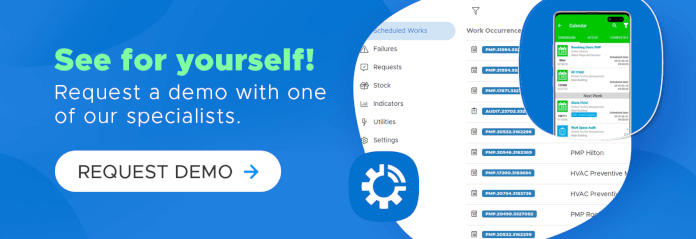We have already talked several times about predictive maintenance. This type of maintenance aims to predict when a breakdown will occur early enough to prevent it. It is more advanced than preventive maintenance, but it is also known to require a high investment and implementation effort. We should not jump to conclusions, however, as there are many predictive maintenance tools available. Today, we want to get a better understanding of how oil analysis works.
What is oil analysis?
Oil analysis looks at the properties of the lubricant, its composition, and indications of contamination. Almost all equipment uses lubricating oil to reduce friction, avoid overheating, and prevent wear and tear on engine and mechanical components. Therefore, oil analysis is one of the most useful, most versatile, and most affordable predictive maintenance tools.
What are the advantages of oil analysis?
Oil analysis has several advantages that we associate with predictive maintenance, including:
- cost savings, especially in the long run;
- increases equipment reliability;
- reduces downtime and increases uptime;
- decreases unplanned maintenance;
- increases equipment life.
How to implement predictive maintenance through oil analysis
The advantages of oil analysis are obvious. But another major advantage has not yet been mentioned: oil analysis is one of the easiest predictive maintenance strategies to implement. Follow these five steps:
1. Select the equipment
If you are thinking of implementing oil analysis, the first step is the same as for any other strategy. You need to choose the equipment that justifies investing in this analysis. Because oil analysis applies to so many different machines, you can make your choice based on criticality or based on risk.
2. Plan your oil sampling
Oil analysis depends on regular sampling. Therefore, you need to determine (1) how often you want to take samples, (2) how to take samples safely, and (3) methodologies for technicians to not contaminate samples and to ensure they are reliable. By the way, we recommend you review our article on LOTO procedures.
3. Choose the appropriate oil tests
There are several types of oil analysis. Choose the tests according to what you want to analyse (fluid properties, metal wear, or potential contamination):
- Particle counting
Particle counting measures the amount of matter in suspension in the oil, which is a good indicator of wear and tear on equipment.
- Viscosity test
Use a viscosity test if your goal is to figure out if the oil can still protect the components. Generally, viscosity above 15% indicates that you need to change the oil.
- Spectroscopy
Spectroscopy is the best method to find out if there is contamination with coolant, fuel, water, or other metals (iron, copper, lead, etc). In infrared spectroscopy, there are several tables to identify each chemical relatively easily.
⚙️ The United States Department of Energy provides a very comprehensive table on the causes that can lead to the appearance of different metals (6.3.2.)
- Percentage of water / Karl Fisher test
Water is one of the main sources of oil contamination. The volume of water in parts per million is an indispensable analysis if a leak is suspected.
- Neutralisation number
The neutralization number measures the acidity or alkalinity of oil: it corresponds to the weight (in milligrams) of acid or base to neutralize the pH of one gram of oil. When the oil is too acidic, it can cause oxidation and corrosion.
4. Define the analysis methods
It is not enough to analyse the lubricating oil and measure the total amount of contaminants. The fourth step is to choose the analysis methods you will apply to the data you collect.
- Cumulative analysis
Cumulative analysis is a good method if you test oil at regular time intervals. It is also a good option for equipment that is used without interruption.
- Rise-over-run
If you sample at variable time intervals, it is preferable to use a method that takes time and the number of cycles into account. This way you can assess whether the oil is wearing at a normal rate or not.
- Percentagem change
In case you want to measure the oil’s viscosity, we recommend measuring the growth in percentage. This will tell you how the oil is performing over time until it needs to be replaced.
- Trend Analysis
Trend analysis is one of the best methods if your goal is to find out if metal contamination is occurring. Tracking trends over time allows you to detect the failure and its origin in time.
5. Review and implement improvements
One of the most positive parts of oil analysis is that there is already a lot of information available beforehand. That is, if a certain metal is increasing over time, it is relatively simple to understand the source of the problem and act in time. Still, we must not forget that in predictive maintenance, data analysis is just as important as condition monitoring.
So, you can (and should) cross-check the data over time. Was there a breakdown that you failed to prevent? What were the indicators before that breakdown happened? Have you detected patterns and trends? Is there a way to further automate repairs? Evaluate what is meeting targets, what is not working as expected, and try to optimise the use of the data collected over time.
Before you finish, we want to remind you that you can integrate your IoT devices, analyse data, and automate work orders in a single intelligent maintenance management platform. Do more… with the same!



